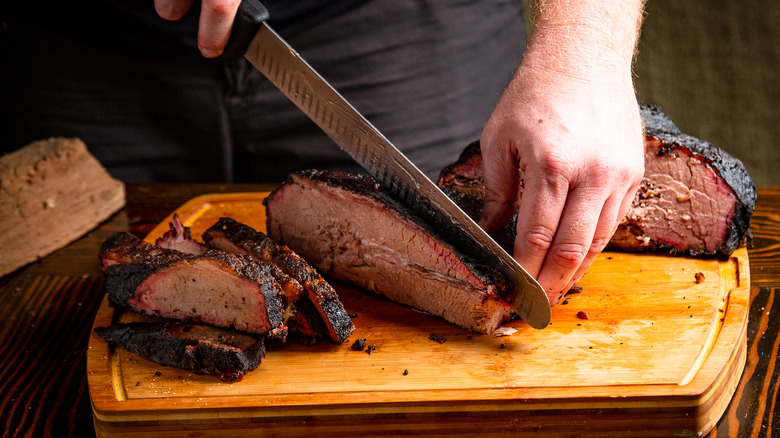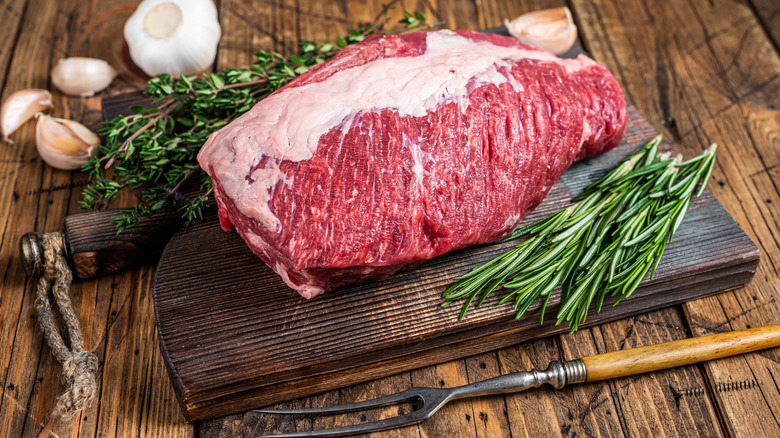How To Choose The Perfect Brisket
If you love long-cooking cuts of meat that turn out meltingly tender, chances are you enjoy a good brisket. A cut of beef that comes from the breast section of the cow, according to The Spruce Eats, these muscles support a great deal of the animal's weight and brisket is consequently a rather tough cut of meat — that is, until you slowly cook it into soft, juicy shreds using a method such as braising, pressure-cooking, or smoking (via Better Homes & Gardens).
If you like brisket, then you probably already know that this versatile cut of meat takes well to a variety of flavors. For example, beef brisket is undoubtedly extremely well known for the starring role it plays in the Texas barbecue tradition, where it is typically smoked over indirect heat and served with a flavorful sauce (via America's Test Kitchen). And as anyone raised Jewish knows, brisket revels in the Eastern European flavors of tomatoes, chicken stock, root vegetables, and herbs, as well (via Martha Stewart).
That brisket braise is traditionally how this meat is served at Passover, the Jewish holiday that celebrates the Jewish liberation from slavery in Egypt, according to Brittanica. Passover runs from April 15 until April 23 this year, so if you're in the market for a good brisket, read on to find out how to select the very best cut at your local butcher or supermarket.
Decide if you want lean meat or a fattier cut
How do you feel about fat? The answer to this question will determine which cut of brisket you should choose when visiting your butcher. According to Martha Stewart, a whole brisket usually weighs between eight and 12 pounds and is actually comprised of two cuts: the first (or flat) cut and the second (or point) cut. The first cut, which is the larger of the two, is the leaner portion of brisket, so ask for this cut if you prefer leaner meat (via Jamie Gellar). The first cut will also preserve its shape a bit better when sliced, so if you want to serve perfect slices of meat (on a unique sandwich, for instance) the first cut is a good option.
The second cut is loaded with intramuscular fat that breaks down over the brisket's cooking time, basting it from within with juicy goodness, and is definitely the best choice for cooks (and guests) who love a rich, tender piece of meat (via Jamie Gellar). Due to the fat content, the second cut will fall apart much more as it cooks, making it an excellent choice for pulled beef.
Whichever cut of brisket you choose, for whatever occasion, don't forget to let the meat rest after cooking: According to Martha Stewart, this is an indispensable step for ensuring juicy meat, whether it's of the lean or fatty variety.

